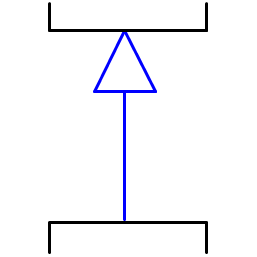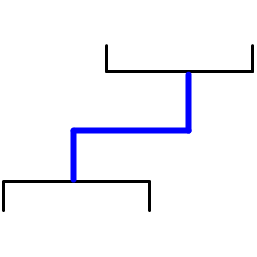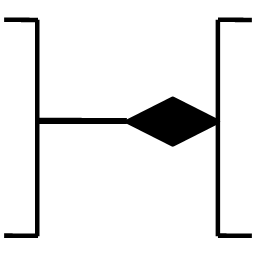The specialization relationship has been inspired by the generalization relationship in UML class diagrams, but is applicable to specialize a wider range of concepts. The specialization relationship can relate any instance of a concept with another instance of the same concept.
A specialization relationship is always allowed between two instances of the same element.
Alternatively, a specialization relationship can be expressed by nesting the specialized element inside the generic element.
Template Type: Connectors
System Dependency
System dependency refers to the relationship between different systems or components within a larger system. It shows which components rely on others to function properly, and how changes to one component can affect the others.
For example, if an application depends on a database to store and retrieve data, then a change to the database (such as an upgrade or maintenance) could affect the application’s performance. Similarly, if a server depends on a network to communicate with other servers or clients, then a network outage could disrupt the server’s ability to function.
Understanding system dependency is important for ensuring the reliability and stability of a system, and for planning upgrades or modifications. By identifying which components are critical and which are less important, organizations can prioritize their resources and investments accordingly.
Concept Generalization
A property from a subclass to a superclass possibly via a SpecializationAspect. A subclass is a subset of a superclass possibly overlapping other subclasses.
Concept Association
A property that characterizes a concept that is always bidirectional by definition.
Concept Aggregation
An aggregation may share its parts with other aggregates. A composition does not share its parts with other aggregates. Composition is a special case of aggregate. A concept aggregation is a special case of ConceptAssociation.
Composition : ArchiMate
The composition relationship indicates that an element consists of one or more other elements.
Complex Relation
A ComplexRelation is used to show e special relation between DataRelations connected to the same DataEntity. If for example a DataEntity can have relation to one of three other DataEntities, DataRelations are drawn to all three DataEntities. In addition to that a ComplexRelation is created and placed on the diagram.
The DataRelation covered by the ComplexRelation is referenced from a link list in the ComplexRelation. It is also recommended to draw the ComplexRelation on the diagram.
Currently there is no automatic synchronization between the two tasks.
Browser Relation
Relation connection on a BrowserDiagram.






